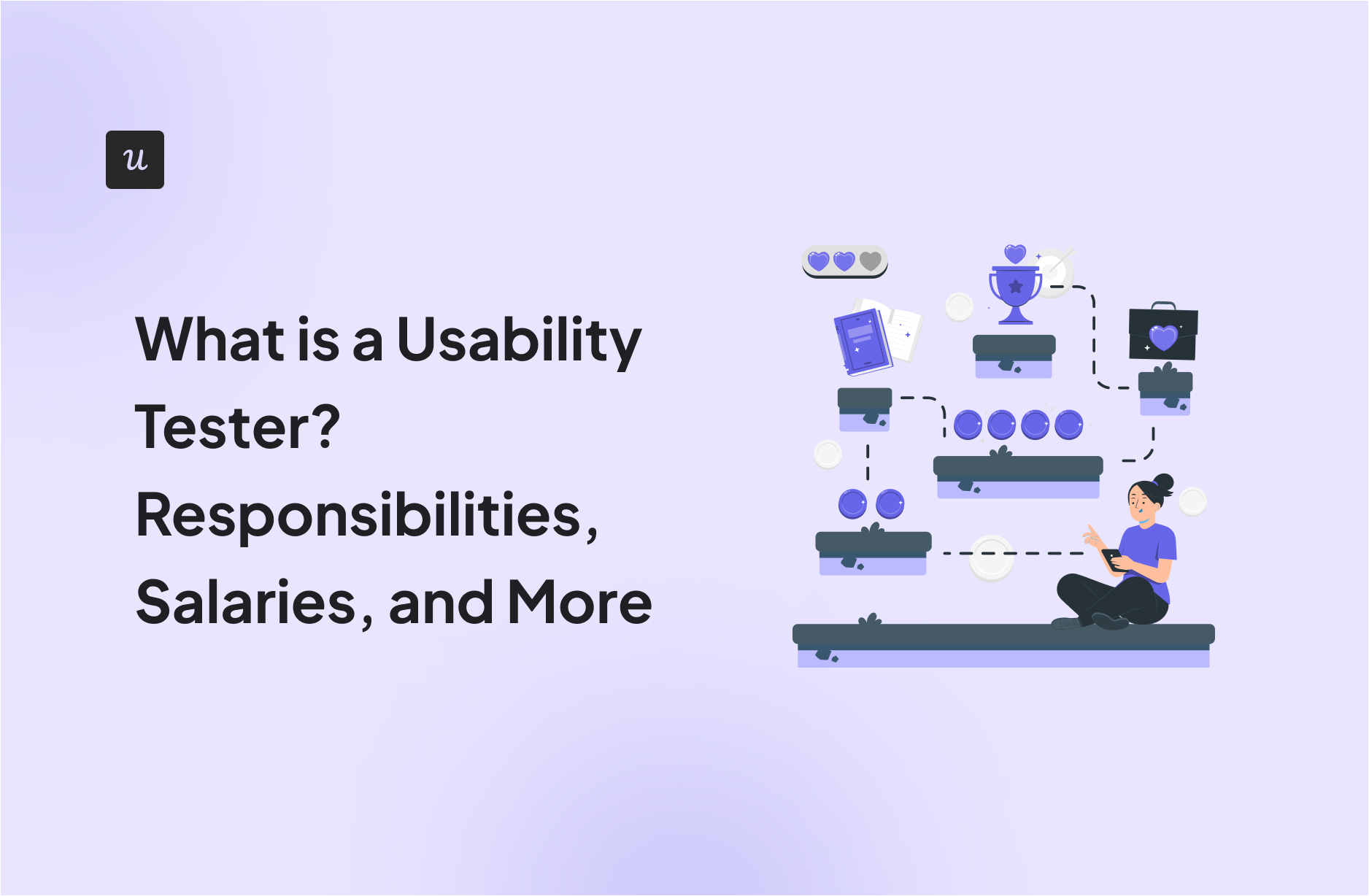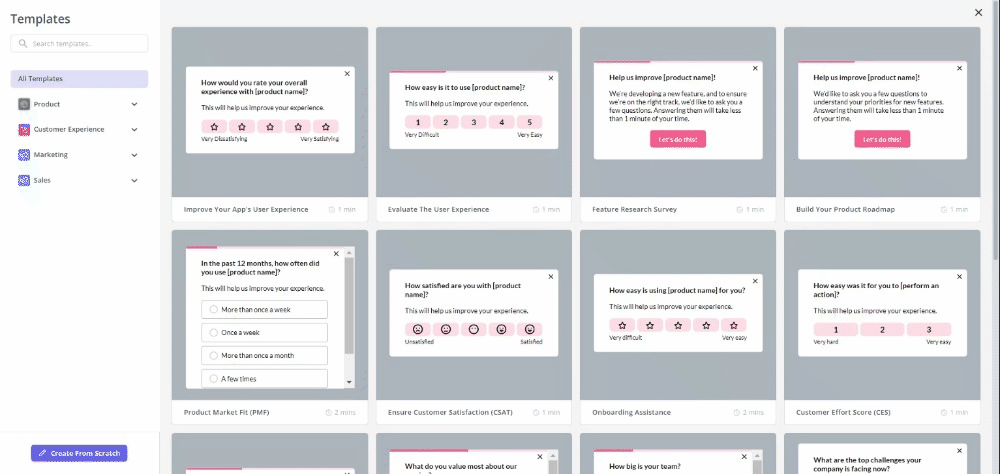
Whether you’re a seasoned professional or new to the field, understanding the nuances of usability testers is essential for success.
In this guide, we’ll delve into the core responsibilities, salary insights, essential skills, and more, providing you with the knowledge and tools you need to excel as a usability tester.
Try Userpilot Now
See Why 1,000+ Teams Choose Userpilot

TL;DR
- A usability tester is a professional who evaluates software applications to ensure they are intuitive, efficient, and user-friendly.
- A usability tester can expect a total pay range of $96,000 to $166,000 per year, with a median total pay of $126,000 annually. This includes base pay, which ranges from $84,000 to $144,000 per year, and additional pay, which ranges from $12,000 to $22,000 per year.
- Looking into tools for usability testers? Userpilot is an all-in-one product platform with engagement features and powerful analytics capabilities. Book a demo to see it in action!
What is a usability tester?
A usability tester is a professional who evaluates software applications to ensure they are intuitive, efficient, and user-friendly.
In the SaaS industry, a usability tester conducts user tests, identifies usability issues, and provides feedback to improve the product.
What does a usability tester do?
usability testers collaborate with product teams to enhance the overall user experience, focusing on ease of use and customer satisfaction.
Their role is crucial for ensuring that SaaS products meet user needs and expectations, leading to higher adoption rates and reduced churn.
Usability tester’s main responsibilities
The usability tester handles various tasks such as:
- Identify Usability Issues: Detect and document any problems users encounter.
- Develop and Execute Test Plans: Create detailed test plans and scripts tailored to assess specific aspects of the product’s usability.
- Collaborate with Cross-Functional Teams: Work closely with designers, developers, and product managers to discuss findings and suggest improvements.
- Analyze Test Results: Interpret data from user testing sessions to draw insights and create comprehensive reports for stakeholders.
- Recommend Improvements: Based on testing results, propose changes to enhance the user experience.
- Ensure Product Usability: Validate that the final product is intuitive, user-friendly, and meets the needs of the target audience.
- Stay Updated with Trends: Keep abreast of the latest usability best practices, tools, and industry trends to apply them to testing processes.
- Participate in Design and Development: Provide user-centric insights during the design and development phases to ensure a seamless user experience.
- Manage Testing Environments: Maintain and update testing tools and environments to ensure they are ready for use during testing sessions.
Requirements and Skills
- Proven experience as a usability tester, UX researcher, or in a similar role.
- Familiarity with usability testing principles and best practices.
- Experience with usability testing tools and software (e.g., Sketch, Figma, Adobe XD).
- Strong analytical abilities to interpret user data and provide actionable insights.
- Excellent verbal and written communication skills for presenting findings and recommendations.
- A keen eye for identifying usability issues and providing precise feedback.
- Bachelor’s degree in Human-Computer Interaction, Psychology, Computer Science, or a related field.
Usability tester salary
A usability tester can expect a total pay range of $96,000 to $166,000 per year, with a median total pay of $126,000 annually. This includes base pay, which ranges from $84,000 to $144,000 per year, and additional pay, which ranges from $12,000 to $22,000 per year.
The average salary is approximately $109,880 per year, with an estimated additional pay of around $15,757 per year. Additional pay may include cash bonuses, commissions, tips, and profit sharing.
The “Most Likely Range” reflects values within the 25th to 75th percentile of all pay data available for this role. It is based on Glassdoor’s proprietary Total Pay Estimate model, which uses salaries collected from users and the latest government data.
Breakdown by experience
- 2 to 4 years (Usability Tester): $80,181 per year
- 5 to 7 years (Senior Usability Tester): $95,717 per year
- 8+ years (Principal Usability Tester): $107,994 per year
Breakdown by location
- San Francisco: $95,071 per year
- New York: $80,187 per year
- Boston: $77,931 per year
- Washington, DC: $78,323 per year
- Chicago: $76,022 per year
Usability tester career path
A career in usability testing offers a clear pathway for individuals passionate about improving user experiences. Professionals can advance through various roles by building expertise in testing methodologies and UX design principles. This guide outlines the key stages of growth from entry-level positions to leadership roles, helping you navigate your journey in the usability testing field and potentially leading to a role as a UX Director.
- Junior usability tester: A junior usability tester is an entry-level position responsible for assisting in conducting usability tests, gathering user feedback, and documenting findings. This role focuses on learning the fundamentals of usability testing, understanding user behavior, and gaining hands-on experience with various testing tools and methodologies. To progress to a mid-level usability tester, gain practical experience, develop a strong understanding of UX principles, enhance technical skills, and contribute to test planning and analysis.
- Mid-level usability tester: A mid-level usability tester designs and conducts usability tests independently analyzes test data and provides actionable recommendations. They may also mentor junior testers and collaborate closely with UX designers and product teams. To advance to a senior usability tester, build expertise in usability testing and UX design, take on leadership roles, present findings to stakeholders, and stay updated with industry trends.
- Senior usability tester: A senior usability tester leads complex usability testing projects, manages the entire testing lifecycle, provides strategic insights, mentors junior and mid-level testers, and works closely with senior stakeholders to integrate user feedback. To move up to a lead usability tester or usability testing manager, demonstrate leadership and project management skills, build a portfolio of successful projects, network with professionals, and pursue advanced certifications or training.
- Lead usability tester: A lead usability tester or usability testing manager oversees the usability testing team, ensures quality and consistency, sets testing standards, develops strategies, and aligns usability goals with business objectives. To progress to a UX researcher or UX director, gain a deep understanding of user research methodologies, develop strategic thinking, and advocate for user-centered design at the organizational level.
- UX Director: The UX director is in the highest position in this domain and leads the entire UX department, setting the vision and strategy for user experience across all products and services.
Best practices for being a great usability tester
To succeed in your role, there are a number of proven methods and tips you should follow:
- Be Thorough in Planning: Always develop detailed test plans and scripts. Clearly outline your objectives, tasks, and metrics to ensure your tests are comprehensive and consistent.
- Create Realistic Test Scenarios: Design scenarios that closely mirror real-world usage. This approach will provide more accurate insights into how users interact with the product.
- Pay Close Attention: During testing sessions, carefully observe user interactions and listen to their feedback. This will help you identify subtle usability issues and understand user frustrations.
- Stay Updated: Continuously educate yourself about new usability trends, tools, and best practices. Keeping your skills current ensures you can apply the most effective techniques.
Usability tester FAQs
- What does a usability tester do?
A usability tester evaluates how easy and effective a product is to use by observing real users as they interact with it. They identify issues, collect feedback, and provide recommendations for improvement.
- What are the roles of usability testing?
The roles of usability testing include identifying usability problems, improving user satisfaction, and validating that the product meets user needs and expectations.
- What questions to ask during a usability test?
Ask about task difficulty, encountered issues, confusing elements, overall experience, and suggested improvements.
- What are the limitations of usability testing?
Limitations include small sample sizes, potential resource intensity, not uncovering all issues, needing skilled facilitators, and subjective findings.
Conclusion
We hope this guide has provided you with valuable insights into the roles, responsibilities, and rewards associated with this role.
Looking into tools for usability testers? Userpilot is an all-in-one product platform with engagement features and powerful analytics capabilities. Book a demo to see it in action!







